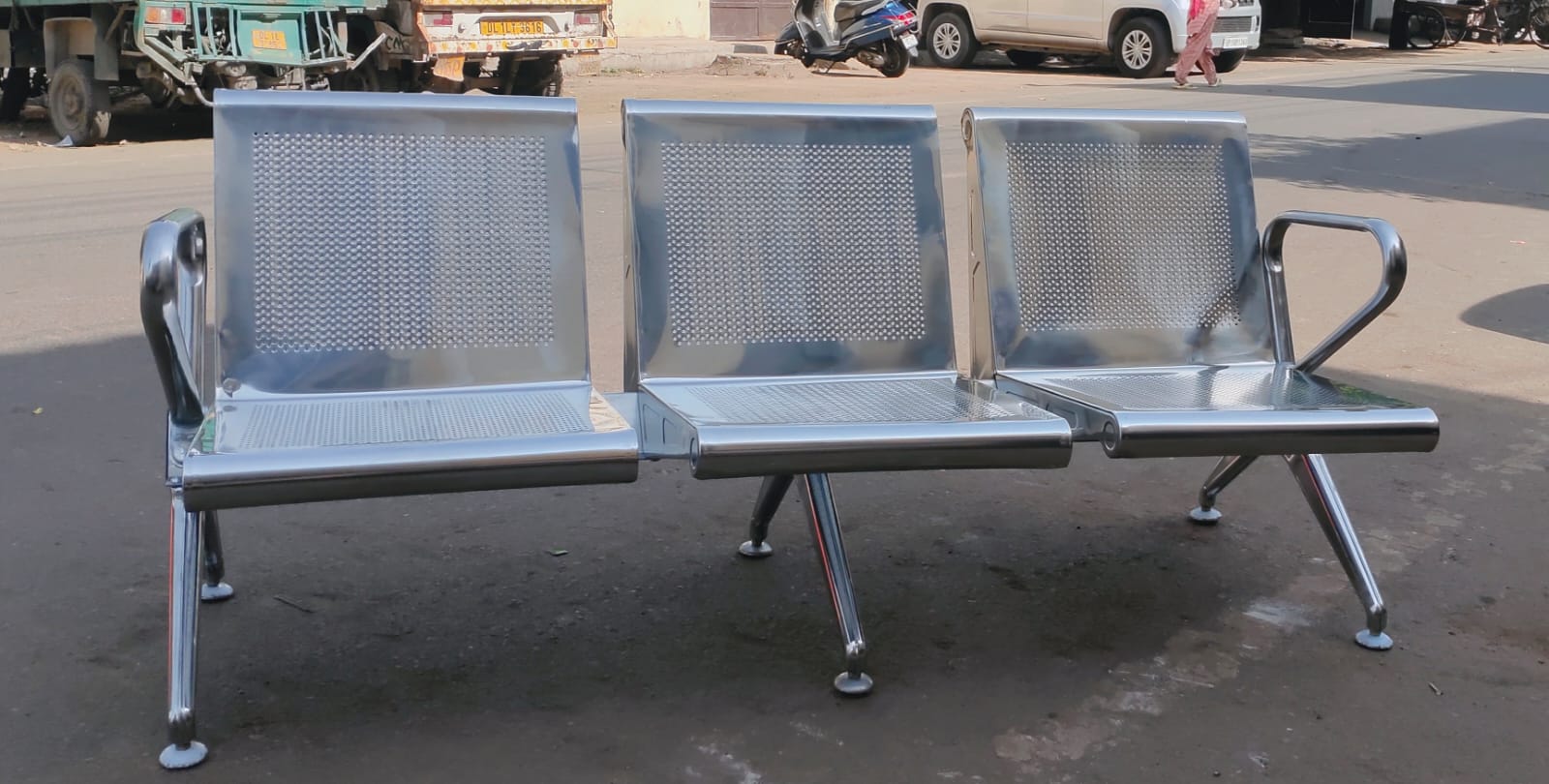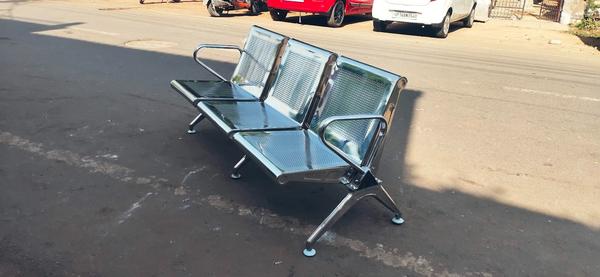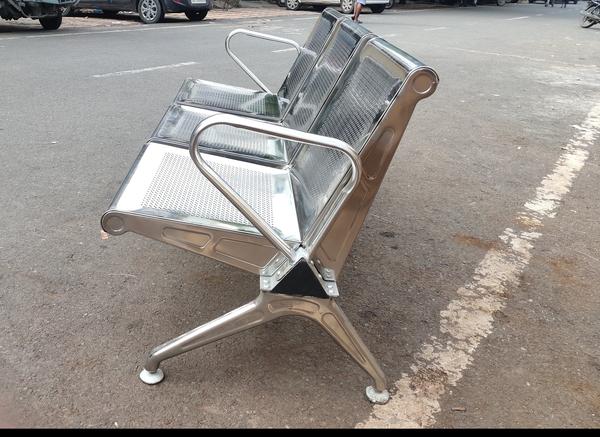
3Seater Hospital Visitor Chair
Hospital visitor chairs are a critical piece of furniture in healthcare facilities. They provide a place for patients' family and friends to sit during visits. Hospitals need visitor chairs to create a welcoming environment and give visitors a comfortable place to spend time at patients' bedsides.
There are a few main types of hospital visitor chairs:
Single-seat chairs
These are standalone chairs that can be arranged around patient rooms. They usually have padded seats and backs for comfort. Single-seat chairs allow flexibility in arranging seating around beds.
Two Seater Chair are two-seater sofas. They allow a couple or parent and child to sit together. Loveseats take up slightly more space than single chairs.
3-seater Hospital Chair Three-seater sofas provide ample seating for families. They take up the most space of standard visitor chair options but allow groups to sit together.
The size and type of visitor chair needed depends on the patient room size and typical visitor numbers. Hospitals need to provide enough comfortable seating without cluttering patient rooms.
Key Features
When choosing a 3 seater hospital visitor chair, some of the key features to consider include:
Dimensions/size- These chairs often range in size from about 4-5
( 1750 x 790 x 690 x 410mm) feet wide to accommodate 3 adults sitting side-by-side. Dimensions are important to consider based on the available space in hospital rooms or waiting areas.
capacity - Hospital visitor chairs should be sturdy and supportive. Many models have a total weight capacity of 600-800 lbs to hold 3 average-sized adults. Sturdier frames and reinforced upholstery materials provide better weight support.
Adjustability - Chairs ideally allow some adjustability in the armrests and backrest tilt to maximize comfort for people of different heights and sizes. Pneumatic seat height adjustment is also a useful feature.
Mobility - Most 3 seater visitor chairs have wheels or casters on the front legs for easy mobility around hospital rooms. Locking casters help keep the chair securely in place once positioned.
Comfort - Generous padding in the seat and back, along with contoured designs maximize comfort for long waits. Antimicrobial, easy to clean upholstery is also important for infection control in healthcare settings.
Materials
Hospital visitor chairs come in a variety of materials, each with their own advantages and disadvantages.
Frame Materials
The most common frame materials for hospital chairs are:
Steel / Stainless steel - Durable and affordable, but heavier than other materials. Tend to be noisier when moving chairs around. Lightweight yet strong. More expensive than steel but ideal for easy mobility.
- **Plastic** - Inexpensive but less sturdy over time. Best for occasional or light use. Easy to clean and sanitize.
### Upholstery Materials
Upholstery materials include:
Hard P U and comfortable but expensive. Requires regular conditioning. Scratches over time. Antimicrobial Fabrics** - Synthetic fabrics infused with antimicrobial technology to inhibit bacteria growth. Good choice for infection control.
Infection Control
Hospital visitor chairs are subject to rigorous infection control standards, as they can harbor germs and facilitate transmission between patients, staff, and visitors. The materials used in their construction play a critical role in enabling effective cleaning and disinfection.
Fabrics that repel liquids and allow thorough cleaning are ideal. Vinyl and leather are common choices, as they don't absorb fluids and can be wiped down between uses. Some fabrics feature antimicrobial treatments, such as Microban or AGion silver ion technology, that inhibit bacterial growth. These provide an added layer of protection beyond cleaning alone.
Metal and hard plastic parts can also be easily sanitized. Avoid chairs with crevices, seams and cushions that can trap germs. Seek out models with non-porous surfaces and waterproof cushions.
Keywords
690
time
uses
Vinyl
seats
backs
child
sizes
410mm
germs
Metal
staff
seams
people
groups
fluids
parent
couple
visits
wheels
friends
variety
liquids
leather
families
3 adults
crevices
armrests
Hard P U
visitors
Microban
furniture
Scratches
light use
Hospitals
Dimensions
long waits
front legs
advantages
protection
main types
occasional
Many models
600-800 lbs
flexibility
Good choice
added layer
construction
Key Features
disinfection
transmission
Adjustability
single chairs
critical role
ample seating
waiting areas
easy mobility
patient rooms
backrest tilt
hospital rooms
weight support
useful feature
critical piece
common choices
other materials
porous surfaces
hospital chairs
Locking casters
available space
Stainless steel
Sturdier frames
bacteria growth
Two Seater Chair
bacterial growth
patients' family
two-seater sofas
Generous padding
Synthetic fabrics
standalone chairs
patient room size
different heights
thorough cleaning
contoured designs
comfortable place
Three-seater sofas
hard plastic parts
Single-seat chairs
effective cleaning
patients' bedsides
healthcare settings
waterproof cushions
regular conditioning
upholstery materials
Antimicrobial Fabrics
total weight capacity
welcoming environment
healthcare facilities
common frame materials
3 average-sized adults
3-seater Hospital Chair
typical visitor numbers
Hospital visitor chairs
antimicrobial treatments
antimicrobial technology
enough comfortable seating
AGion silver ion technology
Most 3 seater visitor chairs
3Seater Hospital Visitor Chair
standard visitor chair options
3 seater hospital visitor chair
Pneumatic seat height adjustment
rigorous infection control standards




